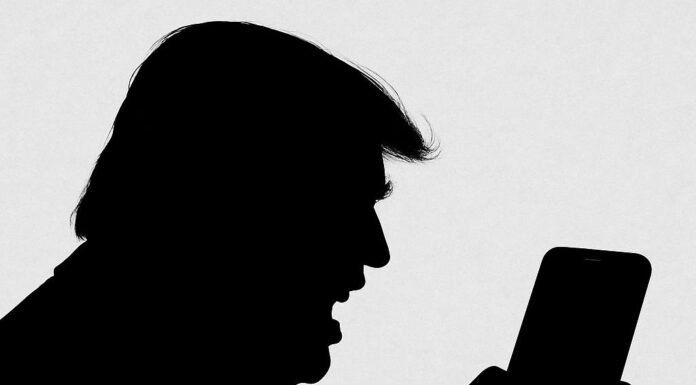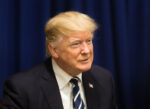On Monday night, August 25, 2025, President Donald Trump intensified his rhetoric regarding international trade, announcing plans for “significant” new tariffs and restrictions on semiconductor exports to nations that impose digital taxes on U.S. technology companies.
Trump took to Truth Social late at night to warn that any country with such taxes must eliminate what he termed discriminatory measures or face economic repercussions. His warning primarily targets European nations, such as the United Kingdom, France, Italy, and Spain, which have imposed levies on major U.S. tech firms, including Meta, Google, and Amazon.
“I am putting all countries with Digital Taxes, Legislation, Rules, or Regulations on notice: unless these biased measures are removed, I, as President of the United States, will impose large additional tariffs on that country’s exports to the U.S.,” Trump posted on Monday night.
He also suggested that he might “impose export restrictions on our highly protected technology and chips,” indicating a readiness to use America’s semiconductor expertise as leverage in this trade contention.
This announcement follows a private meeting between Meta CEO Mark Zuckerberg and Trump at the White House, where they discussed the impact of digital services taxes on Meta’s international operations. Sources familiar with the meeting report that Zuckerberg expressed concerns about these taxes.
Digital services taxes generally apply to revenue generated from users in a specific country, regardless of the company’s physical presence there. For instance, the UK’s tax imposes a 2% charge on firms earning over $635 million globally and more than $32 million in UK revenue, targeting large U.S. tech companies.
Trump has consistently argued that these taxes unfairly target American corporations while sparing Chinese tech enterprises. In his Truth Social message, he stated these laws “shamelessly give a total pass to China’s largest tech companies.”
This latest warning represents an escalation in Trump’s trade disputes, risking further tension with long-term allies. The European Union has rejected his demands, with European Commission spokesperson Thomas Regnier indicating that changes to regulations like the Digital Markets Act and Digital Services Act were “not on the table” during recent trade discussions.
This move echoes actions taken during Trump’s previous term. In June, Canada abandoned its planned digital services tax after Trump threatened to halt trade talks. White House Press Secretary Karoline Leavitt later stated that Canadian Prime Minister Mark Carney had “caved” to Trump’s demands.
The threat to restrict semiconductor exports is particularly serious given the United States’ leadership in advanced chip production and design. Such actions could significantly disrupt countries that rely on U.S. technology in fields such as AI, 5G, and other critical sectors.
Trump’s firm stance on digital taxes aligns with his broader “America First” strategy, which aims to protect U.S. tech companies from what he views as unfair foreign taxation. He has consistently portrayed these taxes as direct attacks on American innovation and economic power.
His announcement comes as the Organization for Economic Cooperation and Development continues slow-moving talks to create a unified global tax system to replace the array of digital levies. Trump’s threats indicate his impatience for a collaborative, international resolution.
European leaders, meanwhile, emphasize that regulating tech giants is crucial to their pursuit of “digital sovereignty” and are unlikely to back down under U.S. pressure. This sets the stage for a likely confrontation between Trump’s trade policies and Europe’s regulatory priorities, with billions in transatlantic trade at stake.
As Trump prepares to take action, the global technology sector once again finds itself at the center of an international trade conflict, positioned between U.S. protectionist measures and foreign governments’ determination to tax their operations.








